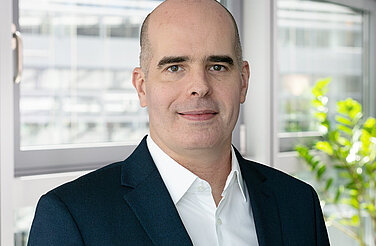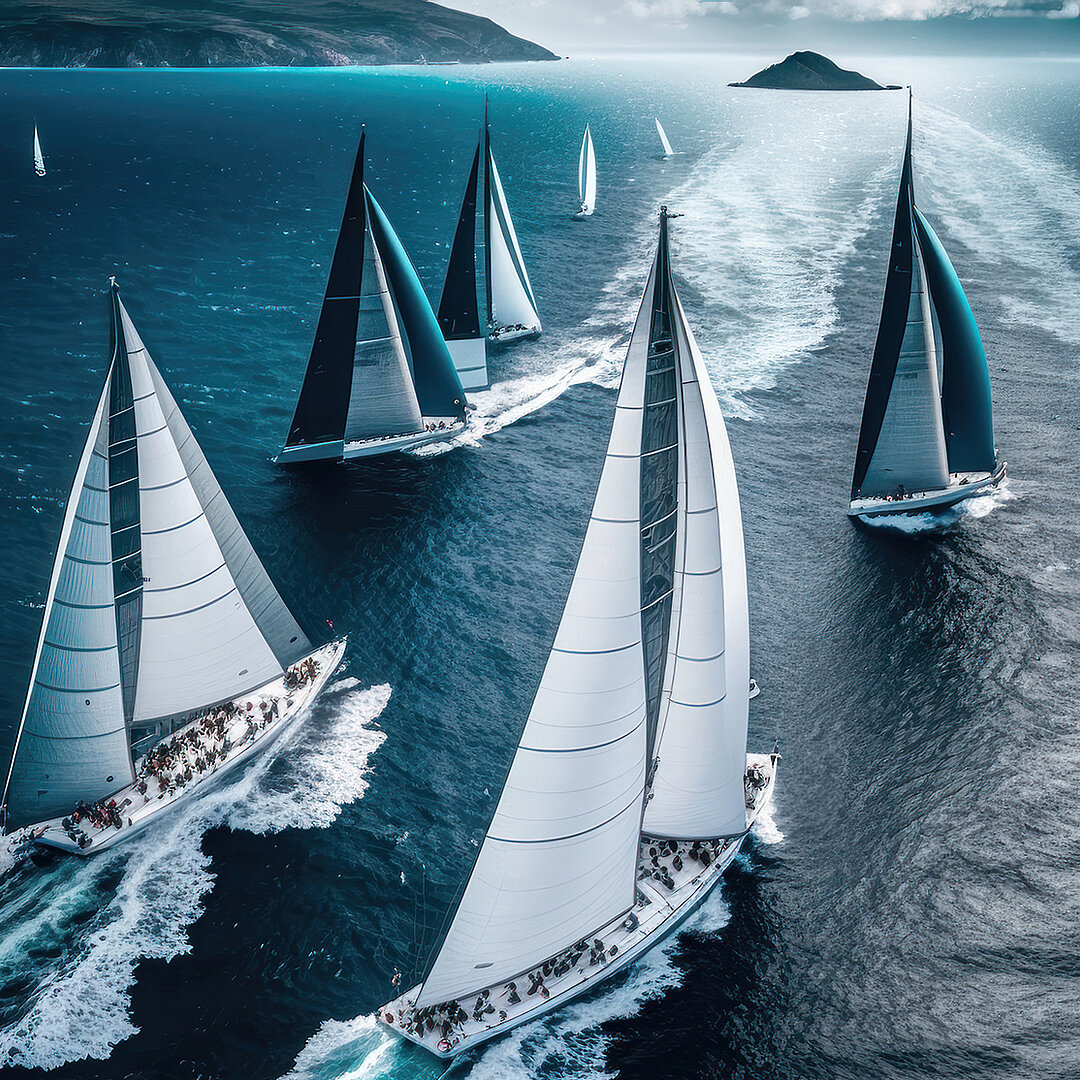-
Transforming the steel sector – responsible for around nine percent of global greenhouse gas emissions – is a major opportunity for sustainable growth and a just transition to climate neutrality.
While the industry faces economic pressure, trade challenges and high energy costs, it also requires significant investments to reach net zero. With smart industrial policy and international cooperation, these challenges can be transformed into opportunities, driving the emergence of a global market for green iron.
-
Governments can unlock climate and economic gains by diversifying supply chains.
By integrating imported green iron into domestic steel production, countries like Germany, Japan and South Korea can cut steelmaking production costs by around 15 percent – while safeguarding higher-value steel production sites and downstream value chains. Potential exporters like Brazil and South Africa can leverage their renewables potential and iron ore resources to move up the value chain, generating thousands of jobs and billions of dollars in trade value gains.
-
A dual strategy balancing domestic steel production and green iron trade is needed to kickstart a resilient and cost-effective transformation towards a global green steel market.
Investing in domestic H2-DRI plants to replace blast furnaces is essential to safeguard the resilience of local production, drive technological innovation and create early market momentum for green steel. Establishing value chains for the trade of green hot-briquetted iron as an intermediary material from renewable energy-rich regions allows for cost-competitive steelmaking.
-
Strategic partnerships between exporters and importers of green iron can complement government efforts to support domestic steel transitions and ensure steelmakers remain competitive in the long run.
Faced with the need to diversify supply chains amid trade tensions, governments can forge new trade relationships. To make green iron trade a pillar of a just and competitive steel transformation, these partnerships need to reflect the interests of Global South producers and align with their development priorities.
The role of green iron trade in accelerating competitive steel transformation
Turning climate ambition into industrial opportunity. How developing partially decoupled industrial supply chains in heavy industries like steel can achieve deep decarbonisation in the sector and create win-win opportunities for both potential importers and exporters of green iron.

Preface
Steel is essential to modern life and to the energy transition. From wind turbines to electric vehicles, transmission grids to hydrogen pipelines, our climate-neutral future depends on it. But today’s current production methods produce some of the largest industrial greenhouse gas emissions in the world.
The global steel industry is responsible for between seven and nine percent of greenhouse gas emissions. Achieving the Paris Climate Agreement’s targets will require a rapid and deep transformation of the sector.
One promising route is hydrogen-based direct reduced iron (H2-DRI). Unlike the conventional blast furnace route, H2-DRI allows iron to be produced separately and then transported in the form of hot briquetted iron (HBI), a solid material that can be cooled and shipped globally, much like iron ore. This enables international trade in green iron and presents a new model for industrial cooperation.
This study analyses the possible win-win scenarios from decoupling the most energy-intensive part of the steel supply chain (iron ore to iron production) from later stages that can more easily be decarbonised. Countries with strong renewables potential and iron ore reserves can produce and export the green iron, while economies without as much renewables potential can import climate-neutral HBI for their steel industries.
The first wave of DRI projects is already taking shape across the globe. In Europe, 34 million tonnes (Mt) of DRI capacity have been announced, with 12 Mt either under construction or already at Final Investment Decision (FID). However, replacing all of Europe’s ironmaking capacity with DRI using imported hydrogen will be challenging. Importing hydrogen-based green HBI may be a more cost-effective option in the long run. For the next wave of DRI, many are looking to locations with stronger renewables potential, both within and beyond Europe.
Developing a liquid HBI market for green industrial supply chains is critical for countries to benefit from trade and comparative advantage in a climate-neutral global economy. Yet international coordination in this area remains limited, creating uncertainty, slowing investment and leading to uneven progress. Our analysis addresses this gap by showing how both potential importer and exporter countries can create mutually beneficial strategic partnerships for green iron trade that can turn climate ambition into industrial opportunity.
Developed together with Agora Industry’s think tank partners – E+ in Brazil, Southern Transitions in South Africa, Renewable Energy Institute in Japan, NEXT group in South Korea and Agora China – the project’s findings have been rigorously tested with local stakeholders across the steel value chain. We have mapped how green iron trade can align development goals with the transition to climate neutrality, while building resilience into a future green global industry.
Key findings
Fundamentals of green iron
Today, more than 70 percent of global steel production is coal-based via the integrated steelmaking route (blast furnace-basic oxygen furnace, or BF-BOF), which produces around 2.2 tonnes of carbon dioxide (CO2) per tonne of steel [1]. As an example, if Europe were to extend the lifetime of its current fleet of BF-BOFs, this could result in an extra 435 Mt CO2 over the next 20 years [2].
The good news: key technologies to transform the steel industry have already reached maturity. Secondary steel can be produced using electric arc furnaces (EAFs) that run on electricity and can be used to produce steel from near 100 percent recycled steel. This is already a much lower-emission alternative. However, scrap availability and quality limit how far EAFs alone can drive the steel transformation. Scaling low-carbon primary steel production, from iron ore, will require alternatives.
Primary steel production can also be done in DRI facilities using hydrogen or fossil gas as the reductant and energy source, with the resulting iron typically fed into an EAF to make steel. Today, DRI already accounts for about nine percent of global iron production, mostly using fossil methane or coal, especially in India, the Middle East, and the North Africa region.
Using renewable hydrogen instead of fossil gas, in a process known as H2-DRI, allows the production of near-zero emissions steel. Producing hydrogen via electrolysis with renewable electricity requires vast amounts of renewable energy, which has been a bottleneck for countries with limited renewables potential. For this analysis, we focus on the H2-DRI route, though other steel decarbonisation pathways are explored in our Low-Carbon Technologies for the Global Steel Transformation paper (2024).
To make DRI suitable for transport, it is compressed at high temperatures into hot briquetted iron (HBI) [3], a denser and more stable form ideal for international shipping and storage. Transporting HBI rather than liquid hydrogen or ammonia can also reduce efficiency losses [4].
In 2023, global trade in products from DRI plants reached 11.1 Mt [5], mostly as HBI – just eight percent of total DRI output and less than one percent of total iron production. Substantial development to scale a clean and globally connected green HBI market is therefore necessary.
Flourish Graphic 1
What drives the competitiveness for green iron?
Some regions enjoy a natural advantage over others due to abundant sunny and windy areas, high-quality iron ore reserves and robust infrastructure. Countries that can capitalise on these resources will gain a clear head start in H2-DRI production.
Large volumes of low-cost renewable energy are essential for hydrogen production. Equally important is access to DR-grade iron ore, typically containing more than 67 percent iron, a requirement for pairing with EAFs.
As a result, nations like Brazil and South Africa with substantial high-grade iron ore reserves stand out as strong candidates for cost-competitive green iron exports. Australia also has significant potential, though most of its iron ore requires additional processing (beneficiation) before it can be used for green steel via the DRI-EAF route.
Countries such as Egypt and Saudi Arabia are also well-positioned to produce green iron thanks to their vast renewable energy resources. However, both would need to import DR-grade iron ore to develop a domestic ironmaking industry based on renewable hydrogen.
Flourish Graphic 2
Economic drivers
Next to the availability of DR-grade iron ore, the cost of renewable hydrogen is the most decisive factor influencing green iron production costs. Together, hydrogen and high-grade iron ore account for more than half of the H2-DRI cost structure, making access to these two resources critical for competitiveness.
Capital expenditure, labour and logistics also play a role, but to a lesser extent. Countries that combine strong solar and wind potential with domestic DR-grade iron ore reserves are particularly well-positioned to lead in cost-effective green iron production. Our analysis reveals that Brazil and South Africa could emerge as the world’s lowest-cost producers of green iron, thanks to their ideal conditions for a mix of solar and wind resources, locally supplied DR-grade iron and relatively low labour costs compared to more developed economies.
However, this potential hinges on the implementation of policies that address the currently high cost of capital for project developers in these countries. Under current market conditions, Australia and Saudi Arabia offer a more attractive environment for investment due to the much lower cost of capital. This advantage positions them as frontrunners in the global race to produce the cheapest green iron.
Meanwhile, major incumbent steelmaking nations such as Japan, South Korea and Germany face much higher production costs for green iron and steel. This is largely due to structurally higher energy costs, even in a mainly renewables-based future, compared to regions with abundant renewable energy potential. These constraints contribute to driving up the costs of renewable hydrogen production in these countries. To address these challenges, they are formulating strategies to import hydrogen for a range of industrial applications, including the steel sector.
Europe, in particular, is planning to develop hydrogen pipeline corridors that could help bring low-cost hydrogen from more favourable regions such as the Iberian Peninsula and Scandinavia to major energy demand centres in Western and Central Europe. These trans-European projects will be essential to scaling the technology and kickstarting the wider decarbonisation of the iron and steel sector.
The renewable hydrogen market is still in its early stages. Understanding what drives its cost and pricing is critical. While the levelised cost of hydrogen (LCOH) can serve as a good indicator for a broad analysis at the pre-feasibility level, it does not account for project implementation costs or profit margins. As a result, actual market prices are likely to be higher and shaped by supply and demand dynamics.
Flourish Graphic 3
Win-win solution
For green steel producers in industrialised economies, importing HBI is an additional strategy that can significantly cut the costs of decarbonising their iron and steel production. It can also provide a hedge against high domestic hydrogen costs. Due to structurally high energy prices, Germany, Japan and South Korea face some of the highest green primary steel production costs. Our analysis shows that by integrating imported green iron into domestic steel production, these countries can reduce steelmaking costs by around 15 percent. Since the DRI-EAF (and DRI-smelt-BOF) steelmaking routes allow the iron and steelmaking steps to be disaggregated, steelmakers can diversify their value chains by importing green HBI in addition to iron ore, while maintaining their domestic steelmaking industries and strengthening downstream value chains. Supplementing domestic green iron production with HBI imports enhances resilience and security of production, while enabling steelmakers to remain competitive by tapping into lower-cost green iron from resource-rich regions.
For exporters of iron ore, green iron trade provides the opportunity to move up the value chain, increasing value added from local iron ore mining and renewable energy resources. Countries like Brazil and South Africa can unlock the competitive advantages provided by these natural resources and turn them into new industrial strategies. The business case provided by green iron exports may trigger investments in renewables build-out and local infrastructure, create jobs across the value chain and keep more value in the domestic economy.
Brazil and South Africa could both benefit significantly by exporting green iron. Brazil is the second-largest iron ore exporter globally, but only around 12 percent of its iron ore is used domestically [6]. The country holds the world’s largest DR-grade iron ore reserves and benefits from a power mix that is 89 percent from renewable sources [7]. These opportunities could generate thousands of green jobs, most of them in the renewable energy sector. This shows how moving up the value chain can foster clean energy industries, support sustainable economic growth and reduce reliance on conventional extractive activities.
The locations for achieving short-term lowest-cost H2-DRI are limited and already highly sought after by early movers. Typically, H2-DRI plants need large amounts of baseload power from low-carbon grids, efficient rail and road links for “soft loading”, and access to deep-water ports. Over the longer term, achieving net-zero steelmaking will demand additional infrastructure, particularly large-scale, low-cost renewable energy generation from wind and solar access to high quality iron ore. These factors guided the selection of countries profiled in our study for potential green iron production in 2040. For steelmakers, securing offtake agreements or partnerships with companies and governments in the limited number of locations that offer an optimal mix of resources will be key to maintaining a competitive edge in the transition to green steel.
Flourish Graphic 4
EU case study
In Europe’s steel sector, an estimated 10 percent of jobs are directly related to ironmaking processes, while 90 percent are in steelmaking and downstream finishing activities. Measures that address high electricity prices, stimulate domestic demand for green steel and reinforce the Carbon Border Adjustment Mechanism (CBAM) can help secure these downstream activities and the high-value manufacturing industries they sustain. Accessing lower-cost green iron and securing long-term supply via offtake agreements or strategic partnerships with green HBI producers can serve as an additional competitiveness factor for the European steel industry.
The planned end of free allowances for industry by 2034 under the EU emissions trading system (ETS) has been a major driver of climate action thus far. Agora Industry projected in 2024 that the carbon price could reach EUR 132 by 2030, and EUR 194 by 2045. Maintaining Europe’s current carbon intensity of 1.8 tonnes CO2 equivalent per tonne of steel would translate to costs of EUR 237–349 per tonne by the mid-2030s. The higher costs placed on fossil-based steel will reduce the green premium by bringing conventional steel production closer in price to low-carbon technologies, accelerating their market adoption.
Based on our analysis, we suggest that Europe adopt a balanced industrial policy in three phases to foster resilience, sustainability and cost efficiency.
Phase 1: Targeted support for replacing blast furnaces with domestic H2-DRI plants is needed to strengthen industrial resilience, reduce strategic dependencies and catalyse green markets – while cementing green technology leadership.
Phase 2: A common European industrial vision should strengthen the EU Single Market and develop EU value chains for green iron and steel that leverage regional strengths and competitive advantage – thereby firmly establishing European steel production as a cornerstone of resilience and security.
Phase 3: Complementing these two phases, strategic industrial partnerships to build international value chains for green iron imports can mitigate risks from domestic hydrogen supply, lower costs, diversify supply chains and reinforce the sector’s long-term competitiveness.
The sequencing of these phases would allow for technology development and correspond to the EU’s carbon pricing trajectory: free ETS allowances will be fully phased out and the emissions cap will tighten, accompanied by a full CBAM implementation. The emergence of trade in green iron over the next 20 years can help reduce some of the economic pressure stemming from the decarbonisation imperative.
Potential importing countries in the EU are likely to also benefit from a growing demand for technologies used in DRI supply chains. Many key technology and industrial development companies are based in Europe such as in Italy, Germany and France. Outside the EU, the same applies to other potential importing countries, such as Japan and South Korea.
Flourish Graphic 5
The China factor
China currently has the largest steel sector in the world. Over 90 percent of its capacity is based on the integrated blast furnace route, and it imports on average over a billion tonnes of iron ore per year.
As the country starts to decarbonise this heavily primary-focussed steel sector, hydrogen-based DRI is expected to become a central pillar of low-carbon steelmaking. China has already constructed around 2.5 Mt of H2-DRI capacity (with most of the hydrogen derived from coke oven gas). In the near term, China could emerge as a green iron exporter (by 2030), supported by the potential for large-scale renewables, relatively lower labour and industrial production costs, a strong domestic supply chain for equipment and investment in hydrogen and green steel technologies led by state-owned enterprises.
However, the lack of high-grade iron ore is a bottleneck for scaling up domestically produced H2-DRI. Steelmakers in China and iron ore miners in Australia are piloting solutions using medium-grade ore, with technology breakthroughs and successful commercial-scale DRI trials combined with electric smelting furnace (ESF) to purify the iron elements for following procedures. Our analysis suggests that China could be a net importer of green iron by around 2040, particularly along the southern coast, which is distant from regions with strong renewables potential. In these areas, imports could become more competitive than domestic industry.
Flourish Graphic 6
Key actors across the industrial value chain must work together
Establishing a global green iron market depends on coordinated efforts from a wide range of actors. Policymakers, investors, project developers, communities, and off-takers each play a role in enabling green iron projects. Aligning policy, finance, technical expertise and social engagement can help create the conditions needed to scale H2-DRI and support steel sector transformation.
Flourish Graphic 8
Policy instruments: unlocking green iron trade for the steel transition
Building a liquid HBI global market in the coming decades will require a comprehensive policy mix across the steel supply chain. This mix should support the creation of strategic partnerships that can guide investments and coordinate action on green iron trade. Such a policy mix must enable the domestic roll-out of new technologies while they face a cost gap with incumbent carbon-intensive production, whilst also focusing on international finance and policy coordination, trade and technology cooperation. Importantly, the specific challenges faced by potential green iron exporters in Global South countries should be addressed to ensure a just and inclusive global transition.
Flourish Graphic 7
Strategic partnerships and de-risking platforms
Establishing parts of the steel value chain in renewables-rich regions can reduce costs and emissions, but this also can pose risks for private investors. These shifts thus need state-level coordination, long-term planning and government-backed risk-sharing tools.
Strategic partnerships between governments provide a framework to align climate, industrial and trade goals while tailoring support to each partner’s needs. These partnerships can send strong political signals, unlock finance and enable investment, de-risking and technology transfer. The EU, for example, has prioritised such partnerships (called Clean Trade and Investment Partnerships, or CTIPs) under the Clean Industrial Deal and the Steel and Metals Action Plan to strengthen value chains and support industry. A first EU-South Africa CTIP has been launched in early 2025. With trust and transparent governance, partnerships accelerate innovation and build resilient, low-carbon supply chains.
They also help harmonise standards and certification for green products, key to fair competition and market access. To scale green trade, partnerships should be backed by demand-side measures like public procurement, customs simplification and long-term offtake contracts.
Existing mechanisms, such as the German-Brazilian Energy Partnership, the German-Brazilian Partnership for a Socially Just and Ecological Transformation, and the EU’s Global Gateway (mobilising EUR 300 billion for infrastructure, reforms and skills), offer a solid foundation. Other new derisking platforms to create market offtake, such as H2Global, may be an additional approach to show the way forward.
Flourish Graphic 9
References
[1] World Steel Association (2024): World Steel in Figures. Online available at: https://worldsteel.org/wp-content/uploads/World-Steel-in-Figures-2024.pdf
[2] The State of the European Steel Transition. Online available at: https://www.e3g.org/publications/the-state-of-the-european-steel-transition/
[3] Midrex (2020): Maximizing Iron Unit Yield from Ore to Liquid Steel. Online available at: https://www.midrex.com/tech-article/maximizing-iron-unit-yield-from-ore-to-liquid-steel-part-2-dri-physical-properties-and-dri-handling-and-storage/
[4] Agora Industry (2024): Industrial value chain transformation. Online available at: https://www.agora-industry.org/publications/industrial-value-chain-transformation
[5] Midrex (2024):World Direct Reduction Statistics. Online available at: https://www.midrex.com/wp-content/uploads/MidrexSTATSBook2024.Final_.pdf
[6] IBRAM (2024): Mineração em números. Online Available at: https://ibram.org.br/wp-content/uploads/2025/02/Mineracao-em-Numeros-2024.pdf
[7] Ember (2024): Brazil rises as G20 renewables powerhouse. Online available at: https://ember-climate.org/insights/in-brief/brazil-rises-as-g20-renewables-powerhouse/
Bibliographical data
Downloads
-
Slide Deck
pdf 2 MB
Green iron trade – EU edition
Unlocking opportunities for Europe
-
Slide Deck
pdf 3 MB
Green iron trade – Brazil edition
Unlocking opportunities for Brazil
-
Slide Deck
pdf 3 MB
Green iron trade – South Africa edition
Unlocking opportunities for South Africa
-
Slide Deck
pdf 3 MB
Green iron trade – Japan edition
Unlocking opportunities for Japan








